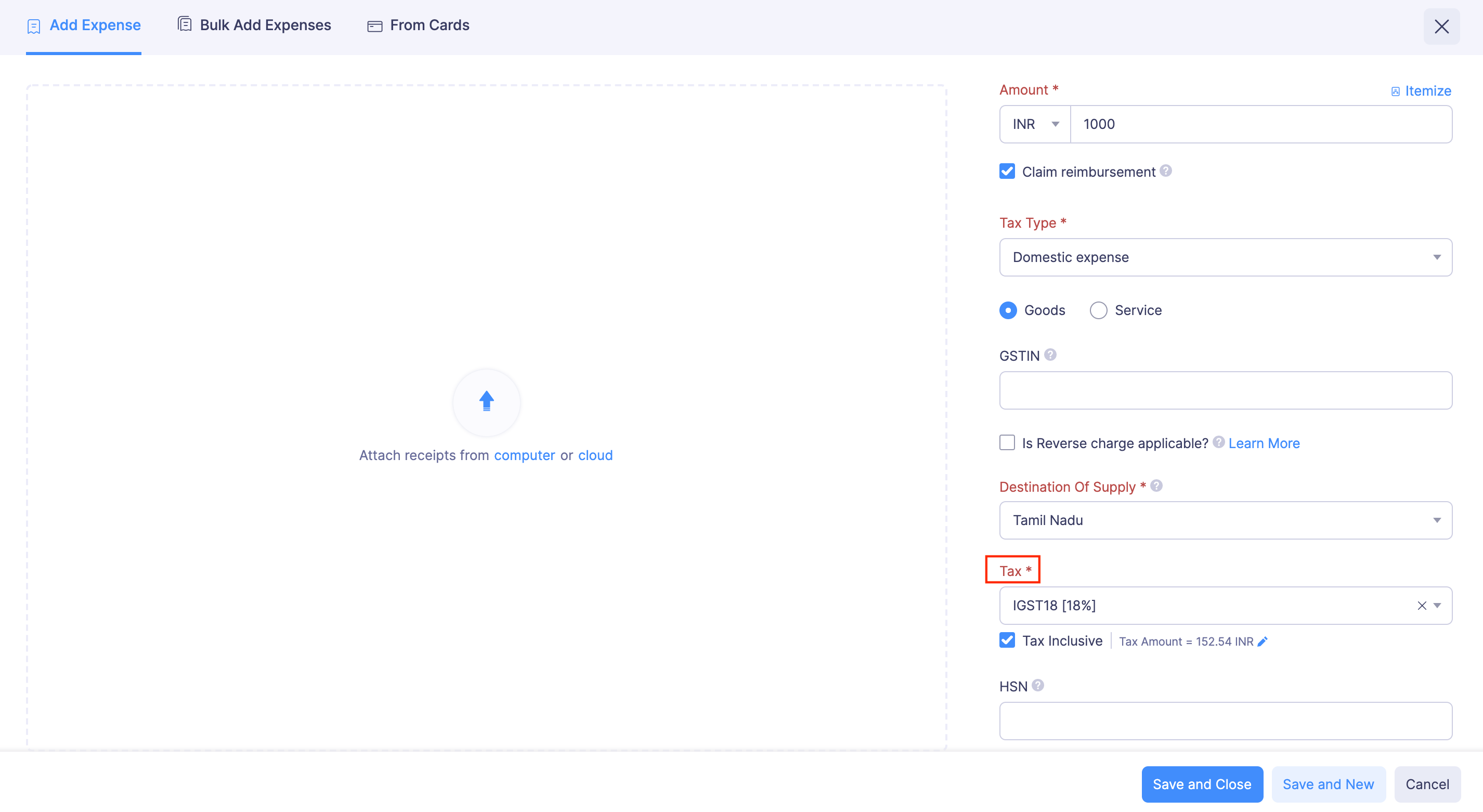GST
GST or the Goods and Services Tax is a tax system that replaces the several indirect taxes with a single tax. This tax is applicable across India and will be levied on all goods and services.
Components of GST
GST will follow a dual component structure: SGST (the state component of GST) and CGST (the central component of GST), both of which will be levied during intrastate movement of goods.
During interstate transfer of goods, a combined tax called the IGST - Integrated GST (SGST+CGST) will be applied by the central government.
Four-tier GST Tax Structure
The new GST tax structure will have four slabs:
- Zero rate - 0%
- Lower rate - 5%
- Standard rates - 12% and 18%
- Higher rate - 28%
An additional tax called the Additional Cess will be applied on tobacco, luxury cars, pan, and aerated drinks.
Enable GST
If your organisation was created with India as the country, you will be able to enable GST and your users can apply the appropriate GST to their expenses.
To enable GST:
- Click Admin View.
- Click the Gear icon in the top right corner.
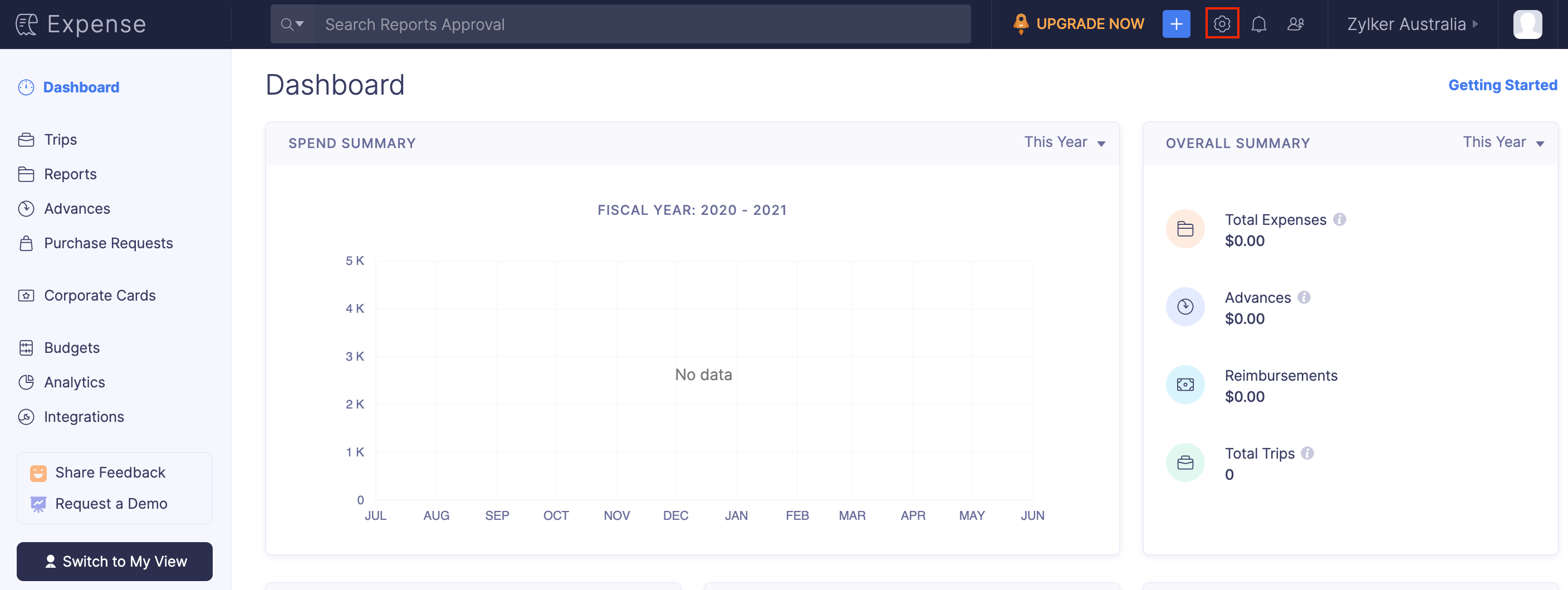
- Go to Taxes under Organisation.
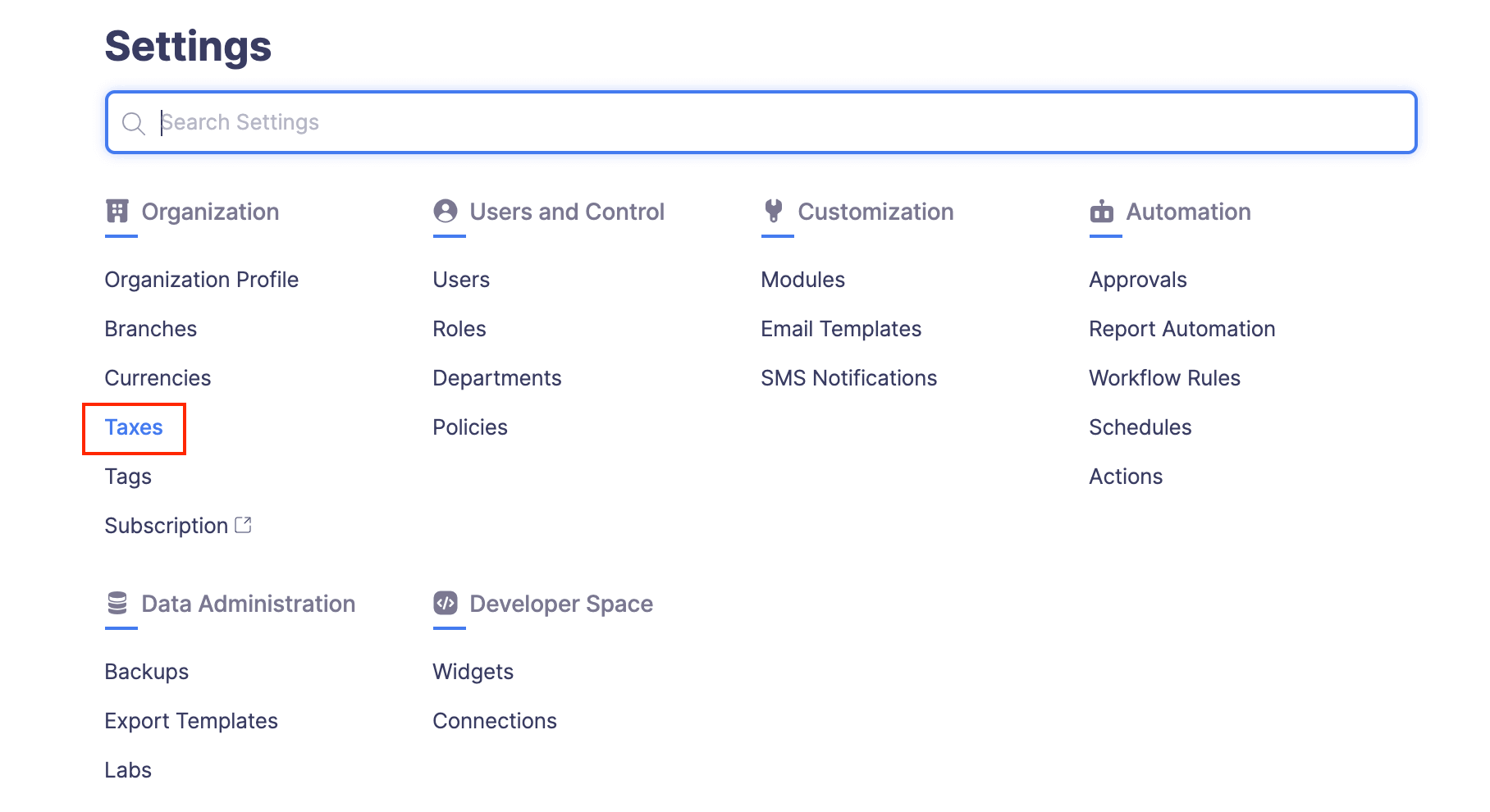
- Click Enable GST in the top right corner.

- Mark the Is your business registered for GST? option.
- Enter your 15-digit GSTIN.
- Mark the Is your business registered for composition scheme? option if you are registered under the composition scheme.
Insight: Small business owners can get rid of tedious GST formalities and pay GST at a fixed rate of turnover. This scheme can be opted by any taxpayer whose turnover is less than Rs. 1.5 crore. In case of North Eastern states and Himachal Pradesh, the limit is Rs 75 lakh.
- Enter your Composition Scheme Percentage. Composition Scheme Percentage is 1% for manufactures and traders, and 5% for restaurants (serving without alcohol).
- Click Save.
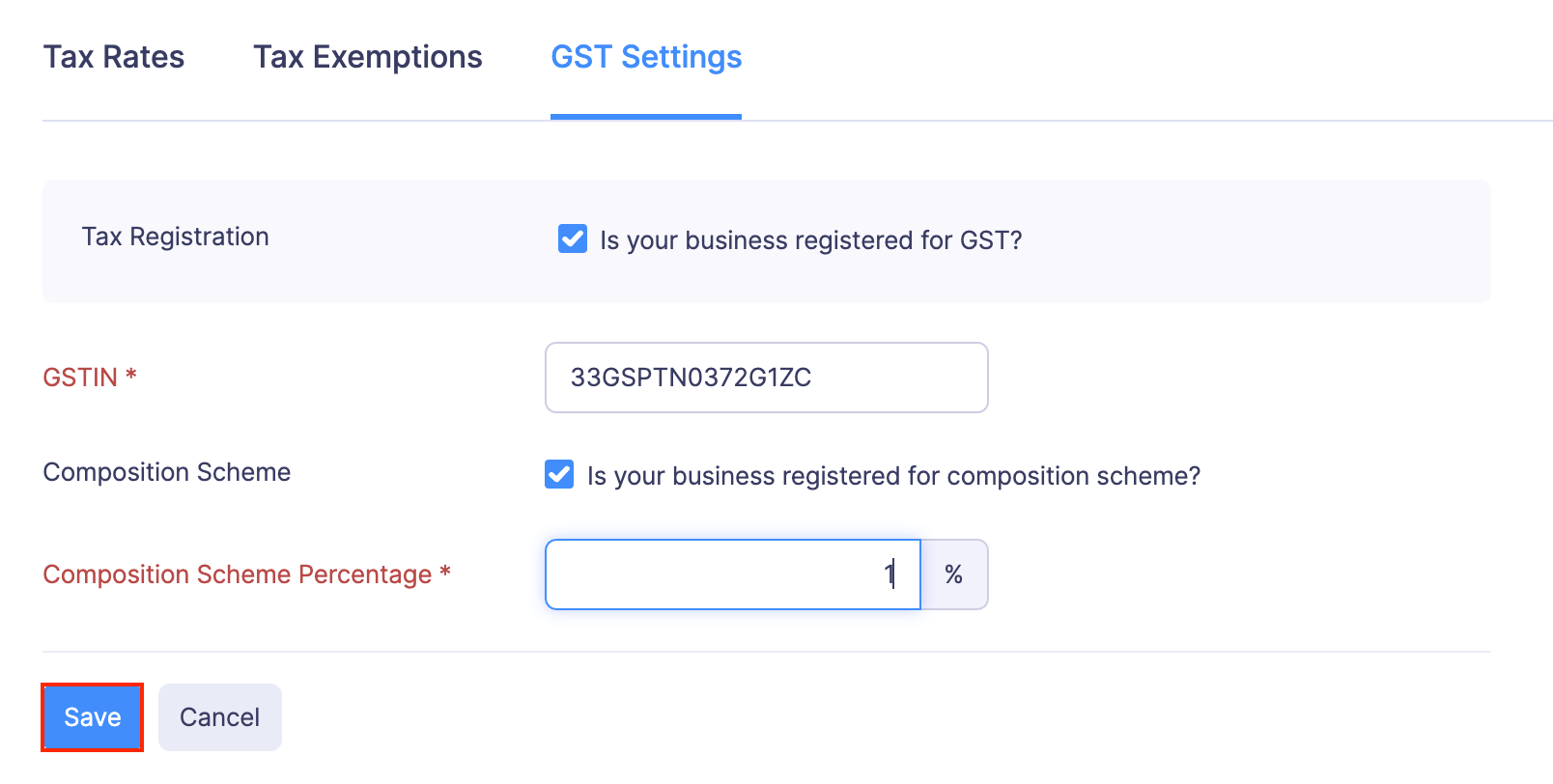
Once you save your GST Settings, a set of default taxes will be enabled for you and your users will be able to apply it to their expenses.
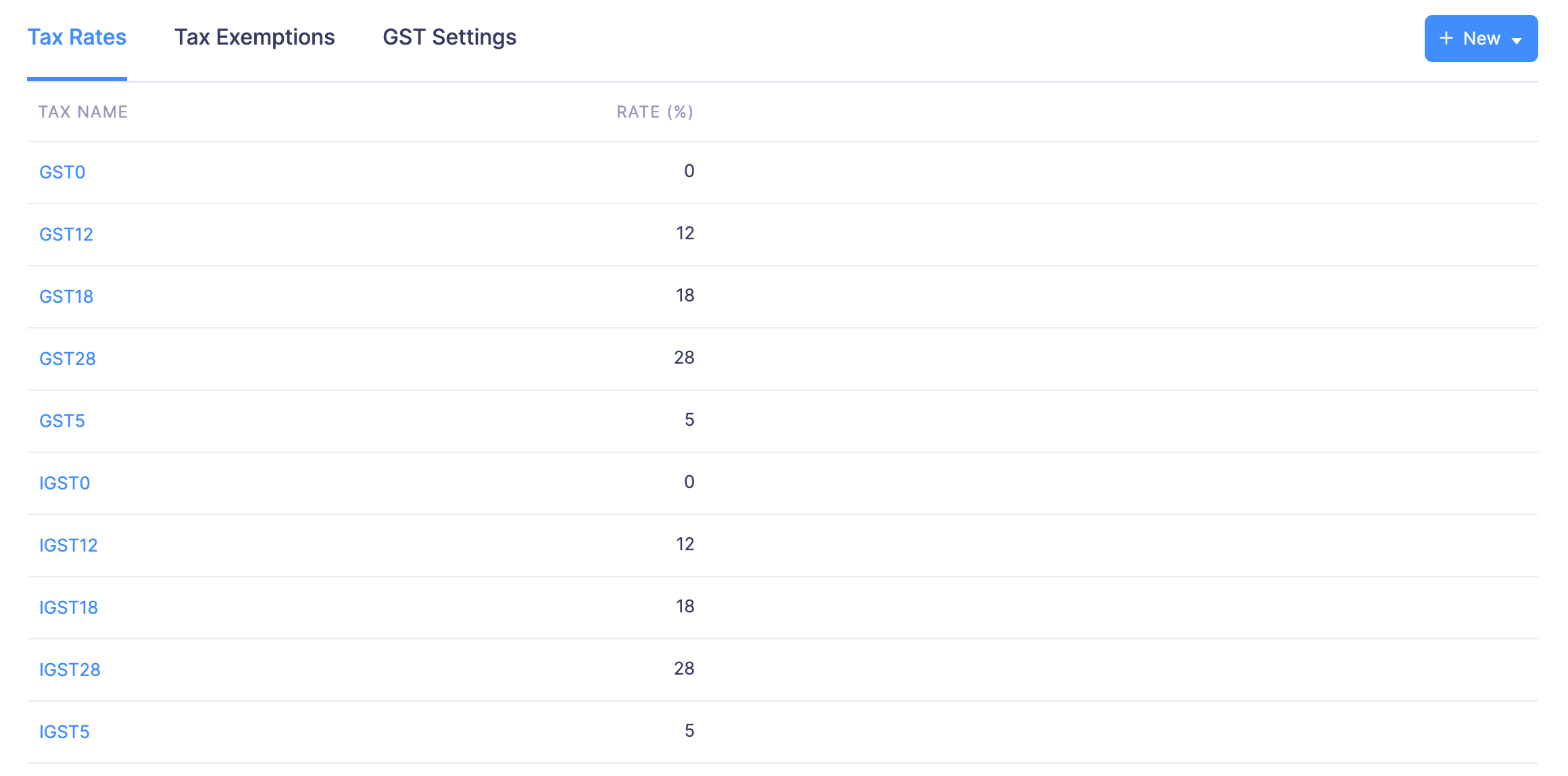
Adding Tax Exemptions
The government has introduced zero rated tax as part of the four slab GST structure. So, if your users incur expenses on zero-rated or exempted goods, they can add the reason for tax exemption and exempt line items from tax when creating an expense.
To add Tax Exemptions:
- Click Admin View.
- Click the Gear icon in the top right corner.

- Go to Taxes under Organisation.

- Navigate to the Tax Exemptions tab and click + New Tax Exemption in the top right corner.

- Enter the reason and description.
- Click Save for the changes to take effect.
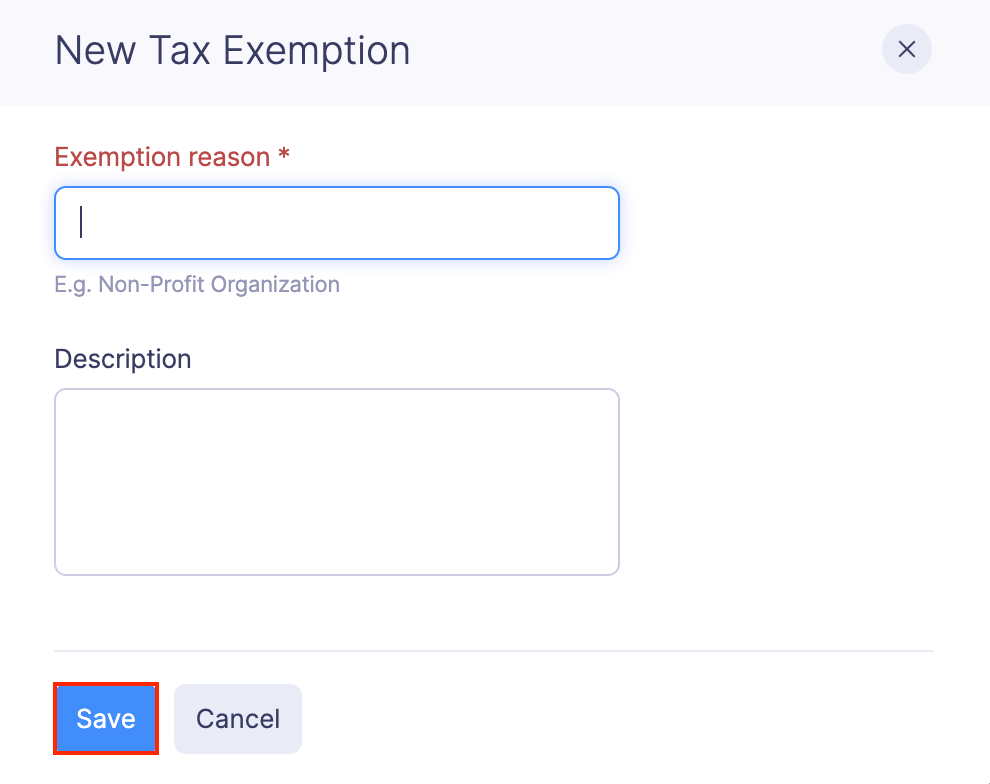
Add a New Tax
Besides the default set of taxes, you can create a new tax. To do this:
- Click Admin View.
- Click the Gear icon in the top right corner.

- Go to Taxes under Organisation.

- Under the Tax Rates tab, click the + New dropdown and select New Tax.
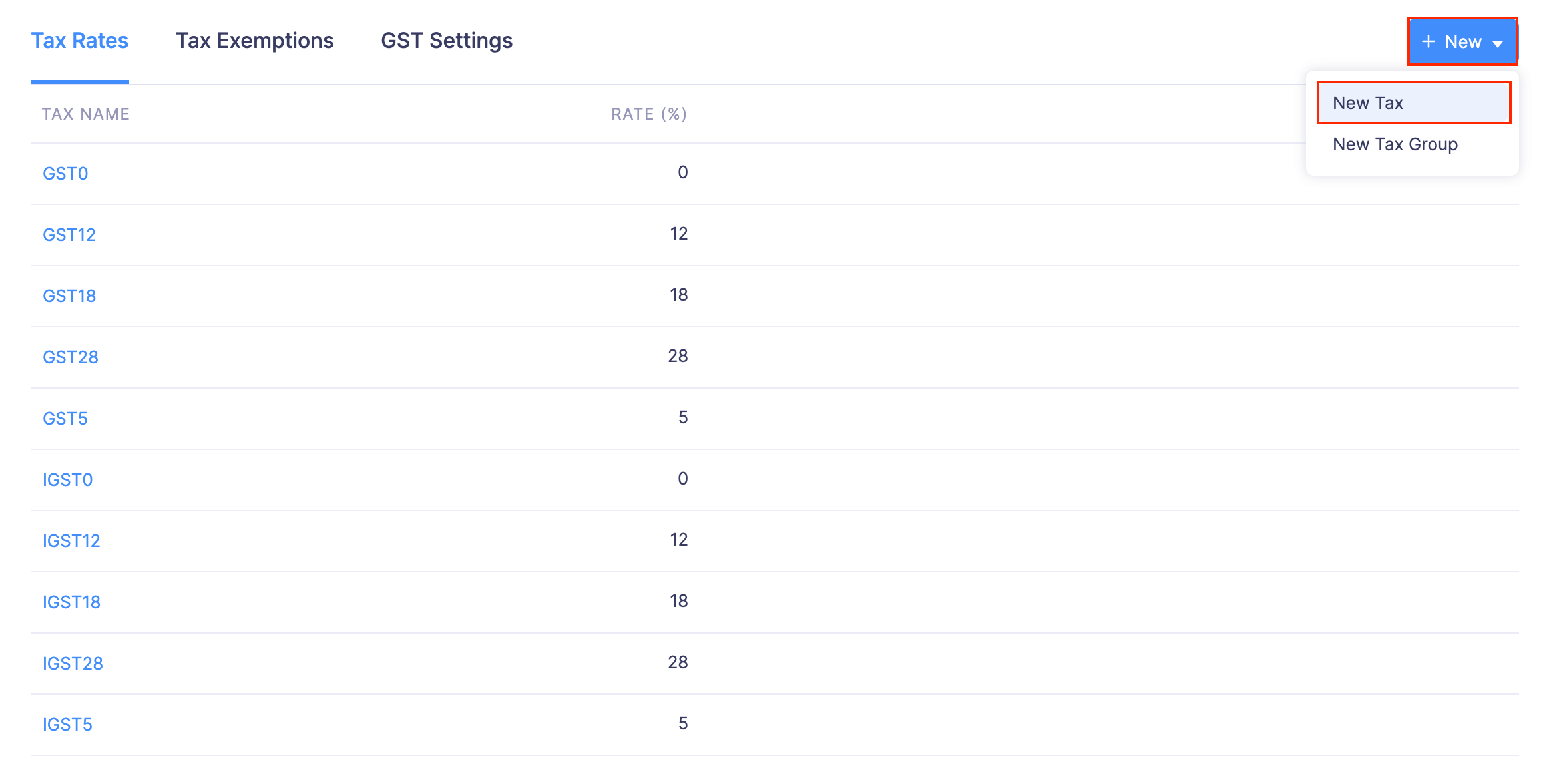
- Enter the Tax name, Tax Rate, and choose the Tax Type you want to add.
- Click Save. Your new tax rate will be added to Zoho Expense.
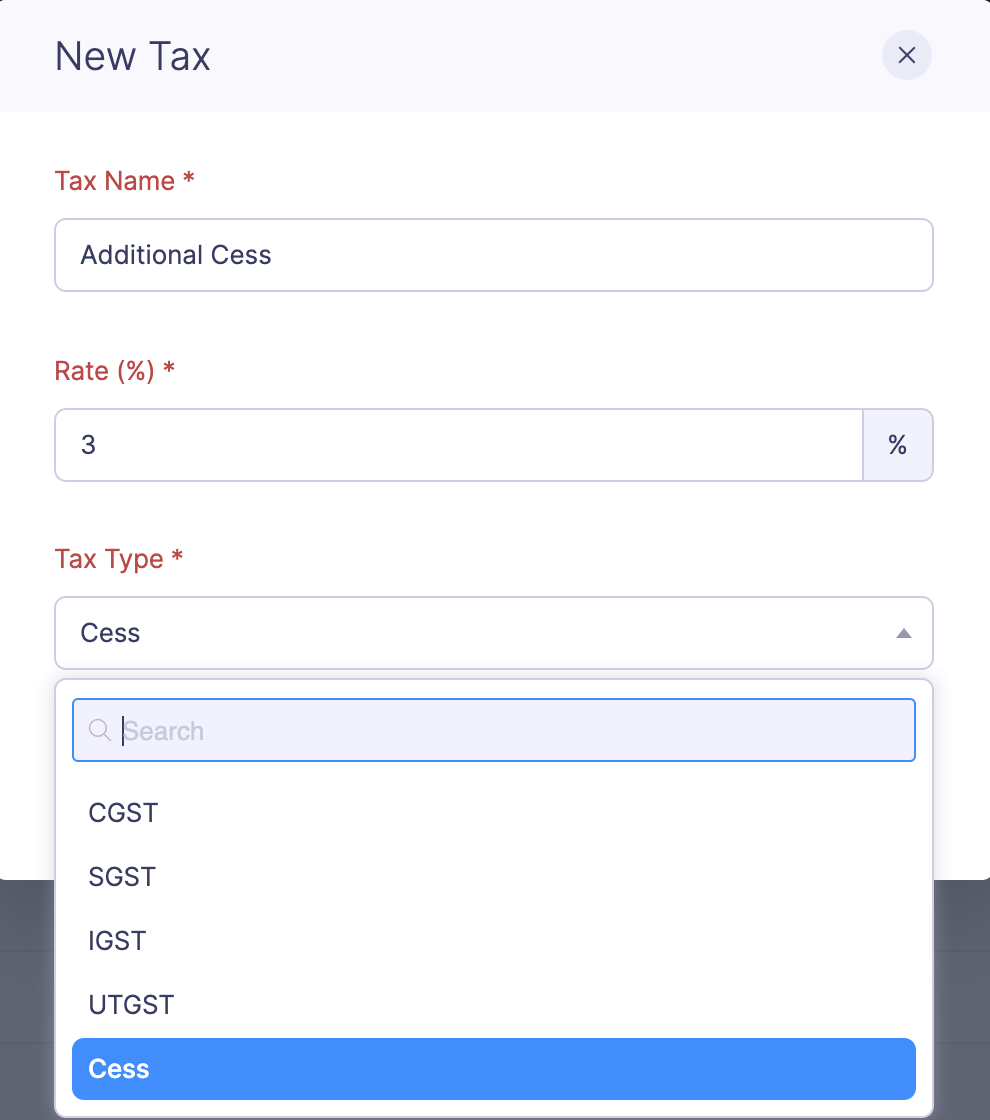
Add a New Tax Group
For some expenses, multiple taxes may be applied. For this purpose, you can club these taxes under a tax group.
To create a new tax group:
- Click Admin View.
- Click the Gear icon in the top right corner.

- Go to Taxes under Organization.

- Click the + New dropdown in the top right corner and select New Tax Group.
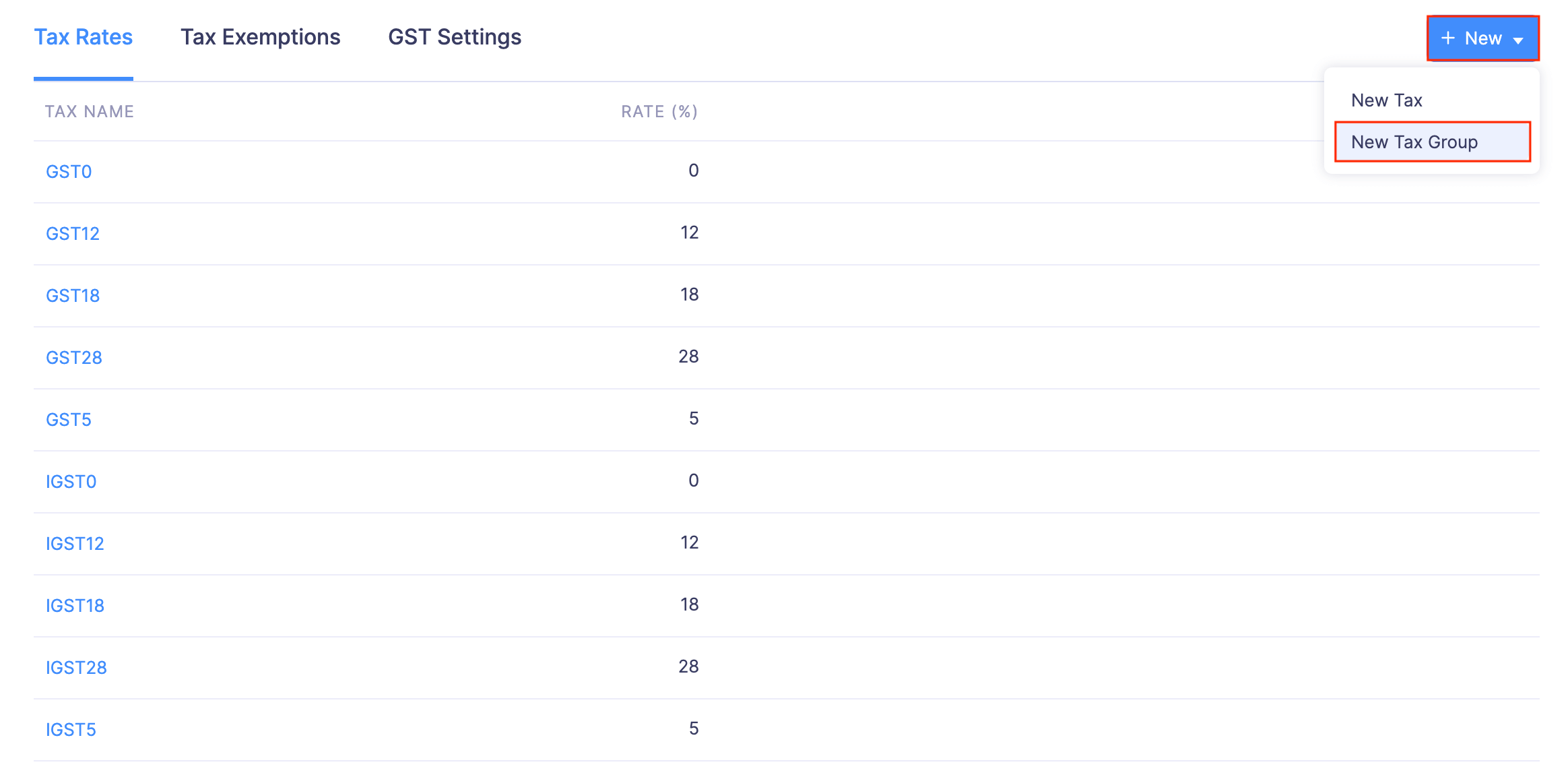
- Provide a name for your tax group and select the taxes you would like to add to your tax group.
- Click Save, to save your tax group.
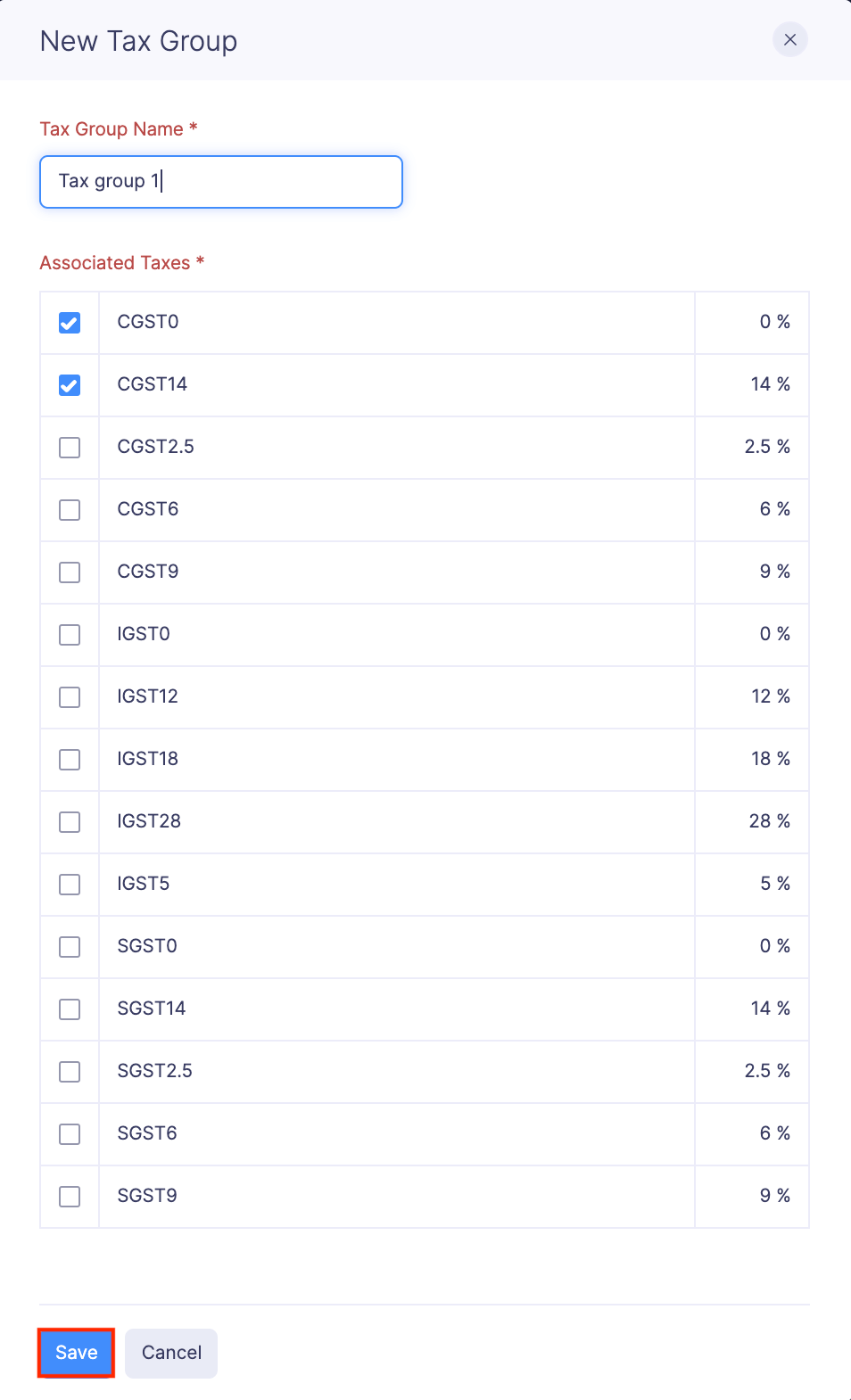
The newly created tax group can now be selected while creating an expense.
Apply GST to Expenses
Your users can apply GST to the expenses they record in Zoho Expense. To apply GST on expenses:
- Go to the Expenses module on the left side bar.
- Click + New Expense in the top right corner.
- Enter essential details such as Date, Category, and Amount.
- Under the Tax Type dropdown, select the tax type.
- Select whether the expense is incurred on goods or a service.
- Enter the GSTIN of the merchant if it’s mentioned in the receipt.
- Mark the Is Reverse charge applicable? option, if reverse charge is applicable to that expense.
- Select the place at which the good or service was received under the Destination of Supply dropdown.
- In the Tax dropdown, select the tax rate you want to apply. If the amount you’ve entered is inclusive of GST, mark the Tax Inclusive option. If the expense is tax exempt, select Tax Exempt and provide a reason by clicking Update next to Exemption reason. You can select an existing exemption reason or enter a new one.
- Enter the HSN of the goods if it’s mentioned in the receipt.
- Click Save and Close to save your newly created expense.
